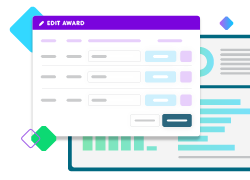Participatory Grantmaking: I’m In! Now What?

You’ve read about participatory grantmaking—and maybe even heard about other organizations using this model to distribute control of their funding strategy and grants decisions to the communities they serve.
But it is a different way of thinking for most grantmakers, so it can be difficult to know where to start. After you’ve considered your foundation’s readiness and decided this approach makes sense, here are some practical, actionable ideas for developing participatory grantmaking in your funding institution.
Not sure if participatory grantmaking is for you or maybe you need a refresher on what it is? Check out the blog post, “Grantmaking: What’s Participation Got to Do With It?”
Choosing Your Participatory Grantmaking Champion
The first step is to identify the person who will get your organization excited about and ready for this new approach. You’ll need at least one champion inside your institution to get started. This person will take the lead in convening internal stakeholders, making plans, testing the waters internally, setting parameters, and liaising with foundation leadership.
Your champion can come from any level of your organization, but they will need to be comfortable working with your leadership and have a strong passion for your community. Is this you?
Perhaps you’ll start by reading about other models, watching webinars, or developing ideas. You might plan a participatory grantmaking pilot.
Getting Leadership Buy-In and Decision-Making Strategy
Leadership support is essential. If you don’t currently hold a leadership role, talk to your management early and often. You’ll need leaders to support—or at least not block—this work. Make sure you understand any concerns. Provide regular updates.
Your leadership may set some parameters or fixed criteria around grantmaking goals, grant use, or eligibility. The grantmaking institution’s budget, values, and mission may define these parameters, or they may just be important to the Board. Be sure those requirements are communicated up-front to participants.
It is critical for you, foundation leadership, and community participants to be clear who is making which decisions. There’s nothing that can undo trust more than telling others to ‘make decisions’ about grants, only to tell them they’ve been overruled by the Board.
Understanding Who Should Participate
Because participatory grantmaking means involving people from communities impacted by the funding, outline who those people or the communities are. Think about your foundation’s grantee community, as well as the ultimate beneficiaries of the funding. Whose lives are being impacted by your funding?
You may be wondering how to decide about who should participate in decision-making from these communities. There are different approaches to this conundrum of who decides. The answer will, in some part, depend on which model of participatory grantmaking you have selected.
If you have decided to use a collective group model, you may invite all eligible applicants to participate. They might, for example, review synopses of eligible proposals and rank them, or vote to prioritize strategic issues or geographies. Or you might invite a broad group of people to participate, including applicants, residents, donors, researchers, and more.
If you have opted, instead, to use a committee model with a group of people deciding, you have many options. You may invite people from relevant communities to apply and select those you feel are a good fit. If you choose this route, you’ll need a transparent process for how you select from those who apply. Always be mindful of the burden you’re placing on applicants.
Alternatively, you could forsake a participant application process in favor of shifting power immediately. The Communities Transforming Policing Fund found members this way:
“We asked seven grantee partners, who are deeply immersed in various parts of the movement, to select the committee members themselves. We offered them a description of the role, what the benefits would be to participants, and the honorarium the participants would receive for sharing their time and expertise. We estimated what times of the year we thought people would need to be involved, and for how much time. And then we checked in with them and offered support as they decided who should be a part of the committee.“
Or you may work with a representative body of the community to put forward nominees. You could accept all their nominees or select the finalists from that larger pool. For instance, the Disability Rights Fund (DRF) invited the International Disability Alliance (IDA) to nominate advisors to serve on their grantmaking committee. IDA is a global membership organization of international and regional membership organizations of persons with disabilities. DRF then reviewed nominees and selected advisors, using interviews and criteria for diversity.
Consider how to ensure diversity among participants. All groups have hierarchies and people who may be marginalized within that context. If social justice is important to you, consider how bringing in more marginalized sectors of the community will help you support solutions, programs, or policies that work for all.
What does participation look like? And what’s in it for participants?
Outline the participant role. What exactly are you asking people to do? Share requirements and expectations for participation, time, and any technical skills needed, including internet access, device, and language requirements. Share what support participants will have to fulfill their role. This might include:
- On-boarding or training about grantmaking rules and regulations, and philanthropy in general
- Support from a mentor, peer, or staff person
- A timeline with activities, time commitments, and deadlines
- Reasonable accommodations for equity in participating, such as the provision of Sign Language interpreters or Braille documents, or more frequent or longer breaks during meetings, depending on individual need
- Methods of participation that are easy, meaningful, and joyful
- Materials in accessible (disability friendly or translated) formats, provided in advance
- Meetings with participants, staff or donors, to talk through strategic questions, or grantmaking rules and regulations.
It is equally important to include the benefits to participating. Avoid a process where only the grantmaker benefits; that’s extraction. Can participating provide networking or learning opportunities, or access to other events?
Critically, compensate participants generously for their time. After all, this is another way grantmakers can move money to communities!
Address Potential Conflicts of Interest
As with all decision-making processes, you will likely want to consider how the group will address potential conflicts of interest. But before you go copying and pasting a 17-page long policy that your Board uses, know that participatory grantmaking is different.
Participatory processes challenge traditional concepts of ‘conflict of interest,’ because the very premise of shifting power is to bring in people with lived experience and expertise, who know their communities, the histories, and the solutions. Distance from an issue (or community) is not the goal here! In our experience, we find that community participants feel a strong sense of integrity and accountability and err on the side of disclosing potential conflicts that aren’t conflicts. Staff should support participants in identifying and mitigating potential conflicts, such as recusal from particular decisions.
We often find that bias is the bigger threat. We all have biases, and they can show up in unusual ways. Grantmakers should address the potential for bias through training or direct conversations. You or the facilitators can ask participants to identify biases and point out any discrepancies or gaps that emerge as the group moves towards decision making. You can ask the group, “Who would be left out by this decision?”
Deciding About Grant Money
Start planning large-group virtual or face-to-face meetings months in advance. Perhaps most importantly, immerse yourself in the decision-making method your group will use to decide. Several participatory grantmakers use consensus, which protects the views of minority viewpoints. Others use majority vote, or a combination of the two, resorting to majority vote only in thorny situations. Research different approaches and see how they align to your values and resources available. Be prepared to facilitate or bring on facilitators to lead these high-stakes group meetings.
Also consider who will join decision-making meetings beyond the community participants. Inviting donors, leadership or Board members can offer legitimacy and promote learning, but always be aware of and attend to power dynamics. Ensure all participants know in advance who is attending, and what their role is in decision-making.
Everyone needs to prepare for these meetings by reviewing in detail the material being considered. If you have received proposals or have conducted research about potential grantees, ensure participants have reviewed it in advance of the meeting. You can support them as they review materials in depth by:
- Asking them questions, and hosting optional discussion spaces
- Encouraging them to apply selection criteria and values
- Presenting data about where philanthropic dollars historically have gone
- Creating an environment that allows them to deliberate with an open mind and heart
Once you have the group all together, do not be afraid of disagreement or conflict. That tension is intentionally part of the power of the group. Integrate elements of creativity and art: some grantmakers include music, poetry, and art. Plan plenty of breaks, good food, and social time. And make sure it’s clear to all when a decision is made!
After decisions are made and all stakeholders notified, publicly share the details of which groups received what funding on your website. Unless there is a security risk, be sure to include the name and affiliations of those who participated in decision-making. When possible, give credit where credit is due. Share non-confidential feedback to unsuccessful applicants to offer transparency.
Learning and doing better next time
Expect the unexpected. There will be bumps in the road. Get support from the community of practitioners. Every time you run a participatory decision-making round, there’s a chance to learn from it. It won’t be perfect on your first round, and it probably never will be, but you have the chance to improve with each round! Participatory grantmaking is all about the process, the iteration, and the learning—for all involved.
Manage your entire grantmaking workflow, from online grant applications through payments
Find out how Blackbaud Grantmaking™ fits your organization.



